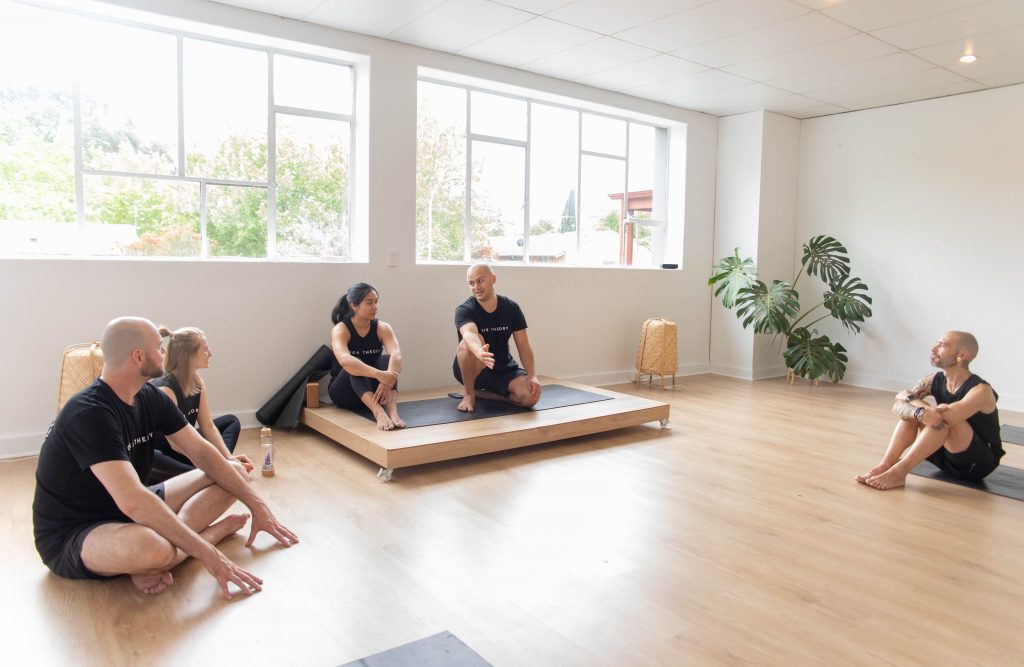Layers, Reference Terms and Planes
This is a basic guide to the common reference terms used when understanding yoga anatomy and alignment.
These terms are important for yoga teachers students who want to know more about how the body works.
If you have any questions about these terms, you can contact us and speak to our friendly trainers.
Layers of the body
Generally, the layers of the body in yoga anatomy are defined as either being superficial or deep.
- Superficial normally means closer to the surface, such as the skin and fascia;
- Deep generally means closer to the core, e.g. muscles and bones.
This information is important for understanding what muscles are accessible.
This helps you understand yoga on a deeper level.
It’s also good to know generally. from a yoga point of view and life generally.
Different practice, different layers
Some physical practices naturally work on a deeper level of the body, such as yin yoga or a deep tissue massage.
Others target a more (although not completely) superficial level of the body, such as a light massage or vinyasa yoga.
These different ways of effecting the physical body are sometimes described as yin and yang practice in yoga philosophy.
An easy way to remember the layers of the body is to picture looking at the body from the outside in.
- First you look at the skin, then the fascia, muscles and finally the bone
The main terms used in yoga anatomy with reference to the layers of the body are:
- Skin
- Fascia
- Muscles
- Bone

Reference Terms
The following are reference terms used to describe the anatomical position in correlation to the rest of the body, or to identify a reference generally.
Proximal or Distal
Proximal and distal are usually used to describe the appendages in correlation to the body.
- Proximal means closer to the centre e.g. shoulders
- Distal means further away e.g. finger tips
- This is usually used for arms and legs in yoga anatomy.
Cephal or Caudal
This is another reference term used to understand somethings location relative to the rest of the body.
- Cephal i.e. towards head
- Caudal i.e. towards tail
Superior or Inferior
- Superior – towards top
- Inferior – towards below
- e.g. the head is superior to the shoulders
Medial or Lateral
- Medial is to the centre line of the body
- Lateral is to the sides of the body
- e.g. lateral (side) stretch or lateral breath when you are in a side bend
Describing the feet
- plantar – bottom of foot
- dorsal – top of foot
Hand References
- Palmer surface – bottom of hand i.e. palm
- Dorsol surface – top of hand
Anterior and Posterior
- Anterior – front of the body
- Posterior – back of the body
Ventral and Dorsal
- Ventral – towards the belly
- Dorsal – towards the back
Positions in Yoga
- Prone (facing floor or dorsal is to floor e.g. cobra pose)
- Supine (seated position e.g. seated forward stretch)
- Biped (on two feet e.g. tadasana)
- Quadrupet (four feet e.g. all 4’s)
Planes of the body
Planes are very commonly used in understanding the anatomy of the human body. For example, when you get an MRI it will tell you the view you are looking at from a plane point of view.
Each movement in yoga happens on its own specific plane. For example, rotation happens on a transverse plane.
Coroner Plane
- Anterior and posterior (i.e. the front side and back side)
Mid-Sagittal Plane
- Divides the body in to left and right side
Transverse Plane
- Splits the body in to superior and inferior (up and bottom view)
More information
You can learn more about our studio and upcoming yoga teacher trainings here.

